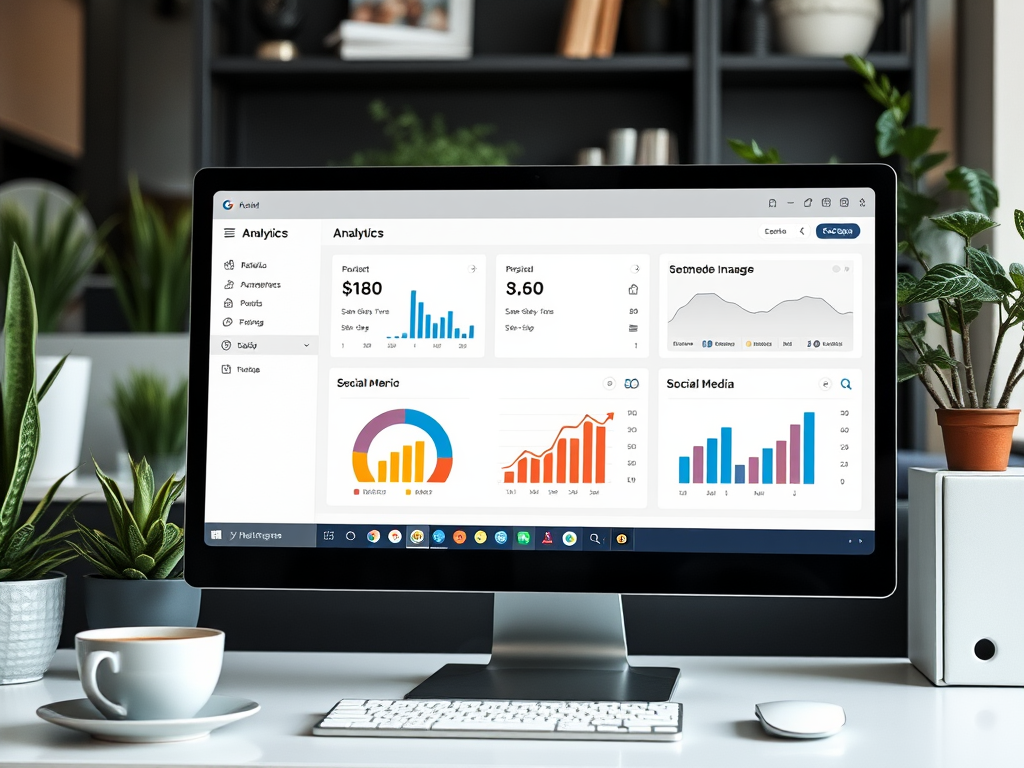In the bustling digital marketplace, staying ahead requires more than just a stellar website or an engaging social media presence. It demands a strategic integration of both Search Engine Optimization (SEO) and social media marketing. The two are often seen as separate entities, but the reality is that they complement each other seamlessly. Understanding this interconnectedness can unlock an array of opportunities for brands aiming to maximize their online reach. With content growing at an astonishing rate, having a dual approach not only boosts visibility but also enhances audience engagement. By leveraging both SEO and social media effectively, you can create a more robust digital footprint that attracts and retains customers.
As we delve deeper into the mechanics of SEO and social media, it’s important to recognize the critical role content plays in both domains. High-quality content is the bedrock of both strategies, serving as a magnet for users and search engines alike. Languages, formats, and platforms may differ, but the underlying goal remains the same: to provide value to the audience. By creating content that resonates, you lay the foundation for social shares that elevate your SEO efforts and advance your brand’s reach. In this article, we will uncover actionable strategies that marry SEO and social media, ultimately maximizing your brand’s online presence. From understanding key concepts to implementing effective tactics, you’ll find valuable insights to steer your digital marketing success.
Understanding SEO and Social Media

What is SEO?
Search Engine Optimization (SEO) involves a series of techniques aimed at improving the visibility of a website on search engines. This encompasses several components, including keyword research, on-page optimization, link building, and technical SEO. Each of these elements works in harmony to enhance the likelihood of appearing in the top results of search engine pages. Critical to this process is the understanding of how search engines evaluate content. They assess factors such as relevance, quality, and user engagement, all of which can be influenced by a brand’s social media activity.
What Role Does Social Media Play?
Social media platforms are not just channels for promotion; they function as dynamic ecosystems where brands interact with their audiences. These platforms facilitate the sharing of content, fostering community participation and brand loyalty. Importantly, social media can drive significant traffic back to your website, serving as a bridge between potential customers and your digital content. The viral nature of social media means that high-quality posts can travel far beyond your existing audience. This increased reach can lead to more backlinks and improved search engine rankings, demonstrating the interconnectedness of SEO and social media.
The Interconnectedness of SEO and Social Media

How Social Signals Influence SEO
Search engines are constantly evolving to deliver the most relevant content to users. In this ongoing evolution, social signals have emerged as influential factors that can affect SEO. When users engage with content through likes, shares, and comments, they create a form of endorsement that search engines take into account. A piece of content that garners attention on social media is more likely to be perceived as valuable. Consequently, it’s critical to develop strategies that not only prioritize social engagement but also enhance conventional SEO efforts.
The Importance of Content Quality
Both SEO and social media are rooted in the foundation of high-quality content. Quality content not only engages audiences but drives them to share it across platforms. In fact, here are some key attributes that define such content:
- Relevance: Aligning content with audience needs and interests.
- Originality: Providing fresh perspectives or insights.
- Engagement: Using visuals, stories, and interactive elements.
- Readability: Ensuring clear and concise information.
- Shareability: Creating content that encourages users to share it.
Strategies to Leverage Both SEO and Social Media
Optimize Social Profiles
One of the first steps in merging your SEO and social media strategies is to ensure that your social media profiles are optimized with SEO best practices. This includes using relevant keywords in your profile names, bios, and posts, alongside an active link back to your website. Such optimization will not only help improve search visibility on social platforms, but will also reinforce your brand’s messaging across the web.
Promote SEO-Driven Content on Social Media
Encouraging your audience to engage with quality blog posts and articles through social media is crucial. Strategically distributing this content can potentially lead to higher traffic and improved rankings. Consider mixing these formats:
- Blog posts
- Videos
- Infographics
- Podcasts
Tailor messaging for each platform to resonate with its user demographics, encouraging sharing and comments to foster a community around your content. Creating a consistent posting schedule can also help maintain audience engagement.
| Platform | Best Content Type | SEO Consideration |
|---|---|---|
| Videos & Articles | Keyword optimization in captions | |
| Images & Stories | Hashtags & Alt Text | |
| Threads & Links | Keywords in tweets |
Engage with Your Audience
An active online presence is the driving force behind social media success. Regularly interacting with your audience through comments, messages, and shares can foster deeper customer relationships. Moreover, encouraging discussions and responding to feedback can improve brand loyalty and trust. Greater user engagement boosts the likelihood of shares, leading to increased visibility both on social platforms and in search engine results. When followers feel valued, they are more inclined to spread the word about your brand.
Use Visual Content Strategically
Visual content such as images, infographics, and videos tends to have a higher retention rate and is significantly more likely to be shared. To optimize visual content, use descriptive alt tags and relevant keywords that align with SEO strategies. This will not only improve accessibility but will also increase the likelihood of your visual content appearing in search results. Additionally, make sure your visuals are tailored to the specifics of each platform, maximizing their impact and reach.
Tracking Performance
Tools for Measuring Success
Utilizing analytics tools is essential for determining the effectiveness of your combined SEO and social media efforts. Tools like Google Analytics can provide insights into website traffic coming from social media. On top of this, social media platforms often have their own analytics tools that allow you to track engagement metrics. This data can help shape future strategies, guiding you on where to focus your energies for maximum impact.
Analyzing Metrics
Regular analysis of key metrics is crucial for tweaking your strategies over time. Focus on these important metrics for evaluation:
- Website Traffic: Measure how much traffic comes from social media.
- Social Shares: Monitor which content is being shared the most.
- Engagement Levels: Look at likes, comments, and shares on social media posts.
Such insights enable you to refine your approach and adapt your content strategies to meet the needs of your audience better.
Conclusion
Integrating SEO and social media is not just a marketing trend—it’s a necessity for brands aiming to break through the noise and capture audience attention. By understanding how these two strategies complement each other, businesses can foster a unified digital presence that attracts and retains customers more effectively. Implementing optimized social profiles, promoting SEO-driven content, and engaging with your audience can collectively strengthen your outreach. The digital world is ripe with opportunities waiting to be maximized, and the partnership of SEO and social media is the key to unlocking them.
Frequently Asked Questions
- How do social media shares impact SEO? Social media shares can lead to increased visibility and higher traffic, which can improve search rankings over time.
- Can I rank on Google without social media? Yes, it’s possible to achieve good rankings with SEO alone, but social media can provide additional traffic and engagement signals.
- Should I optimize my social media posts for SEO? Absolutely! Using relevant keywords and hashtags can help your content reach a broader audience.
- How often should I post on social media for SEO benefits? Posting consistently is key. Depending on your audience, a few times a week to daily can help maintain engagement.
- Is it better to focus on SEO or social media? Both are important. A balanced approach that incorporates techniques from both SEO and social media typically yields the best results.